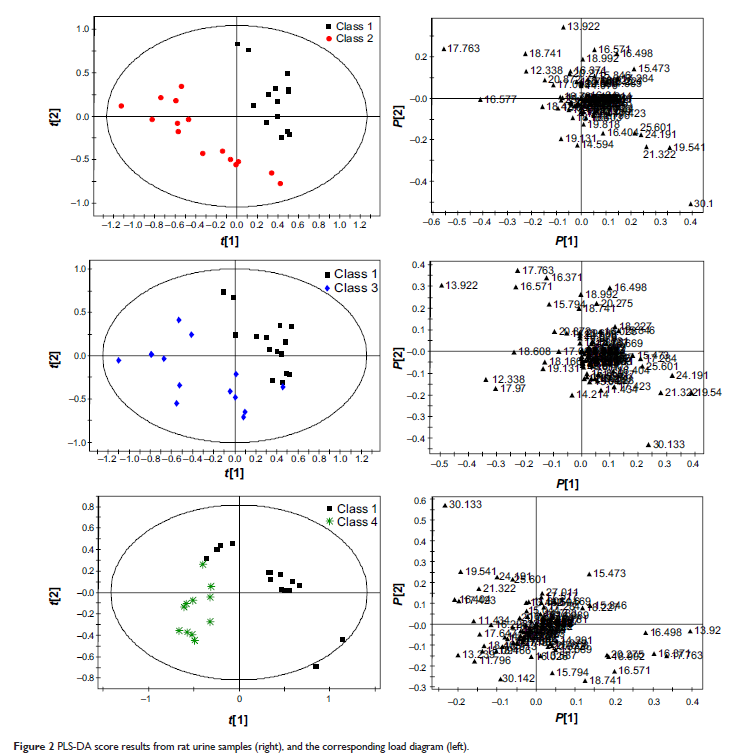108384
论文已发表
注册即可获取德孚的最新动态
IF 收录期刊
- 3.4 Breast Cancer (Dove Med Press)
- 3.2 Clin Epidemiol
- 2.6 Cancer Manag Res
- 2.9 Infect Drug Resist
- 3.7 Clin Interv Aging
- 5.1 Drug Des Dev Ther
- 3.1 Int J Chronic Obstr
- 6.6 Int J Nanomed
- 2.6 Int J Women's Health
- 2.9 Neuropsych Dis Treat
- 2.8 OncoTargets Ther
- 2.0 Patient Prefer Adher
- 2.2 Ther Clin Risk Manag
- 2.5 J Pain Res
- 3.0 Diabet Metab Synd Ob
- 3.2 Psychol Res Behav Ma
- 3.4 Nat Sci Sleep
- 1.8 Pharmgenomics Pers Med
- 2.0 Risk Manag Healthc Policy
- 4.1 J Inflamm Res
- 2.0 Int J Gen Med
- 3.4 J Hepatocell Carcinoma
- 3.0 J Asthma Allergy
- 2.2 Clin Cosmet Investig Dermatol
- 2.4 J Multidiscip Healthc

已发表论文
氯胺酮给药后大鼠的尿液代谢
Authors Wen C, Zhang M, Ma J, Hu L, Wang X, Lin G
Published Date February 2015 Volume 2015:9 Pages 717—722
DOI http://dx.doi.org/10.2147/DDDT.S76898
Received 3 November 2014, Accepted 25 November 2014, Published 3 February 2015
Abstract: In this study, we developed a urine metabonomic method, based on gas
chromatography–mass spectrometry (GC-MS), to evaluate the effect of ketamine on
rats. Pattern recognition analysis, including both principal component analysis
and partial least squares discriminate analysis revealed that ketamine (50
mg/kg) induced metabolic perturbations. Compared with the control group, at day
7, the level of alanine, butanoic acid, glutamine, butanedioic,
trimethylsiloxy, L-aspartic acid, D-glucose, cholesterol, acetamide, and oleic
acid of the ketamine group was increased, while the level of
2,3,4-trihydroxybutyric acid, benzeneacetic acid, threitol, ribitol, xylitol,
and glycine decreased. At day 14, the level of alanine, ethanedioic acid,
L-proline, glycerol, tetradecanoic acid, l-serine, l-phenylalanine, L-aspartic
acid, d-glucose, cholesterol, heptadecanoic acid, and acetamide in rat urine of
the ketamine group was increased, while the 2,3,4-trihydroxybutyric acid,
benzeneacetic acid, d-ribose, threitol, ribitol, glycine, pyrazine, and oleic
acid levels decreased. Our results indicate that metabonomic methods based on
GC-MS may be useful to elucidate ketamine abuse, through the exploration of
biomarkers.
Keywords: GC-MS, abuse, biomarker, metabolite
Keywords: GC-MS, abuse, biomarker, metabolite
